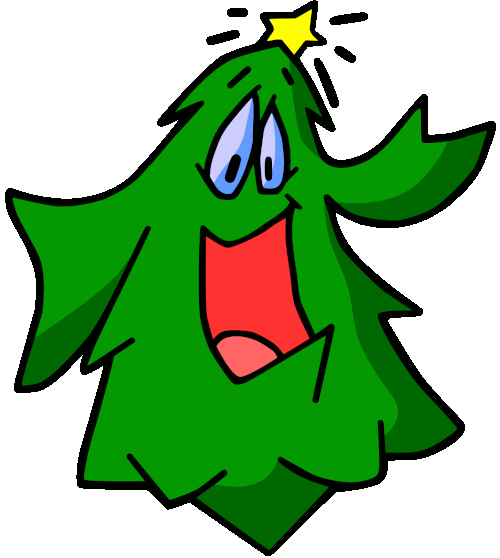COSTA RICAN CHRISTMAS


https://www.google.com/maps/place/San+Jos%C3%A9+Province,+San+Jos%C3%A9,+Costa+Rica

| HOW TO SAY MERRY CHRISTMAS: | |
|---|---|
| In Spanish | Feliz Navidad |

WhyChristmas.comChristmas in Costa Rica
Christmas in Costa Rica comes at the end of the school year and the start of the holidays - so people really look forward to getting to the beach!People like to decorate their houses with beautiful tropical flowers. A model of the nativity scene, called the Pasito or Portal, is the center of the display. It's also decorated with flowers and sometimes fruit. Some of the scenes take a long time to make and all the family is involved. As well as the traditional figures, people add other models including houses and lots of different sorts of animals.
- Christmas wreaths are made of cypress branches and are decorated with red coffee berries and ribbons. Most homes, shops and important buildings are decorated with Christmas lights.
- In Costa Rica, the gift bringer is often 'Nino dios' (Child God, meaning Jesus) or 'Colacho' (another name for St. Nicholas).
- Apples are popular in the run up to Christmas with apple stands appearing at the sides of the road.
- On Christmas Eve, everyone puts on their best clothes and goes to Midnight Mass. In Costa Rica it's called the 'Misa de Gallo' (Mass of the Rooster); it's also called that in Spain.
- After Midnight Mass the main Christmas meal is eaten. It normally includes chicken and pork tamales that have been wrapped for cooking in plantain leaves. To drink there's lots of egg nog and rum punch!
During December and into January, there are lots of fiestas, parades, rodeos, street parties, bull runs and choral and dance festivals. On 26th December there is an important horseback parade called the Tope. The next on the next day (27th), many towns and cities have 'Carnaval' with a big parade featuring dancing and big floats.

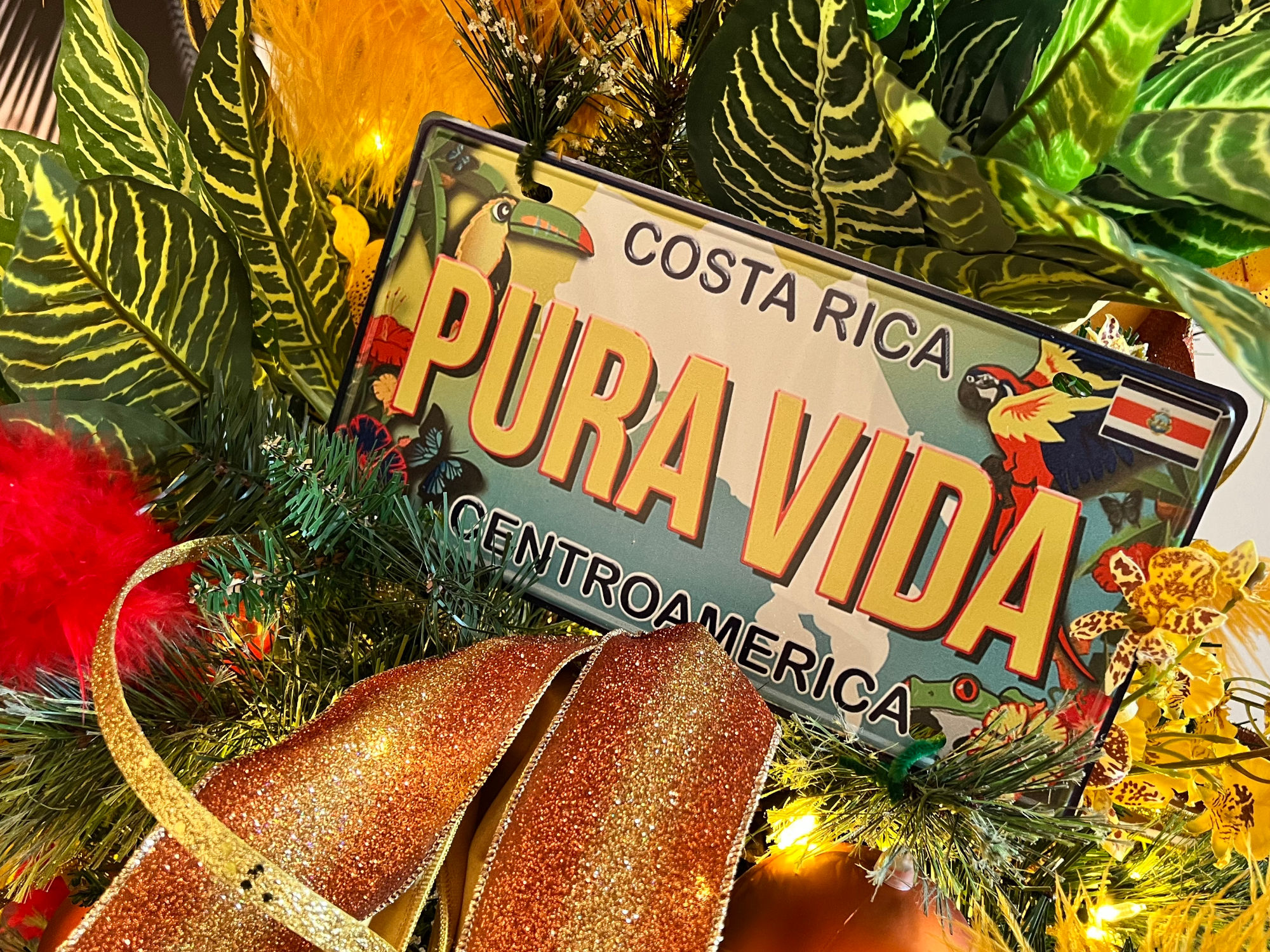

Culture TripChristmas tamales are a family tradition during the holiday season in Costa Rica. It is a group effort and a labor of love. Typically, the women in the family will get together and assemble one large batch of tamales that will last for the entirety of the Christmas season. The healthier version of this savory treat is made with vegetable shortening instead of lard. Each tamale contains some type of meat (although there are some vegetarian ones, too), rice, potatoes, garlic, a mixture of seasonings, and hot or sweet peppers on top of a cornmeal dough. This is all wrapped up in a banana leaf, and the tamales are then steamed to perfection.


Trip SavvyChristmas in Costa Rica
Costa Rica is primarily Catholic, and Costa Ricans observe Christmas with exuberance. Christmas in Costa Rica is a vibrant time: a celebration of the season, of lights and music, and of course, family togetherness.
Christmas Trees
Christmas trees are a huge part of Christmas in Costa Rica. Costa Rican citizens often decorate fragrant cypress trees with ornaments and lights. Sometimes the dried branches of coffee shrubs are used instead, or an evergreen branch if available. The Christmas tree in front of the Children's Hospital in San Jose is considered the most important and symbolic Christmas tree in all of Costa Rica, representing gratitude and hope for the coming year, especially for the children.Holiday Traditions
As with many Catholic nations, Nativity scenes with figurines of Jesus, Mary, Joseph, the wise men, and the animals visiting the manger are standard Costa Rican Christmas decorations, called pasitos or portals. Offerings such as fruits and little toys are placed before the Nativity scene. The baby Jesus figurine is placed in the Nativity the night before Christmas when he brings presents to the household's children. In Costa Rica, it is not Santa Claus who brings the gifts on Christmas Eve; it is the infant Jesus.The Costa Rica Christmas season doesn't end until Jan. 6, when the three wise men are said to have greeted baby Jesus.
Christmas Dinner
A Costa Rican Christmas dinner is just as elaborate as an American one. Tamales are one staple of the Costa Rican Christmas dinner, pastries, and other Costa Rican desserts like tres leches cake. To drink, Costa Ricans favor eggnog and rum punch.Another traditional meal is roast pork with rice or mashed potatoes and vegetables. Costa Ricans eat Christmas dinner after Misa de Gallo (Mass of the rooster), the Christmas midnight mass. Those who don't attend church usually have dinner at 10 p.m. or earlier.
Festivals and Events
Christmas in Costa Rica commences with Festival de la Luz, held the second week of December, when the capital city of San Jose is transformed into a garland of lights. A huge lighted parade takes place on the second Saturday at 6 p.m., traveling from Paseo Colon to El Parque de la Democracia. Every year almost 1500 musicians participate in the festival, attracting over a million spectators from around the world.Bullfights are another traditional event during the Costa Rica holiday season. In Costa Rica, it is against the law to hurt the bull in any way. It's not really a bullfight. It is actually a corrida, which means "run" or a rodeo. At the event, 50 to 100 fighters enter the bullring. Once the bull is led into the ring, the objective is to outrun the animal without being horned, kicked, or trampled upon.
In San Jose on Dec. 26, the Tope Nacional de Caballos is the national horse parade featuring horses and the country's agricultural heritage. Horsemen from all over the country come to parade their beautiful horses and show off their riding skills. The hand-painted oxcarts from Sarchi are also celebrated. The parade begins around 1 p.m. in downtown San Jose on Paseo Colon.
The Carnival Nacional takes place on Dec. 27 in San Jose with a parade of colorful floats on display and colorfully costumed participants dancing to the rhythm of the bands. The parade runs along the main avenues of Avenida Segundo and Paseo Colon.

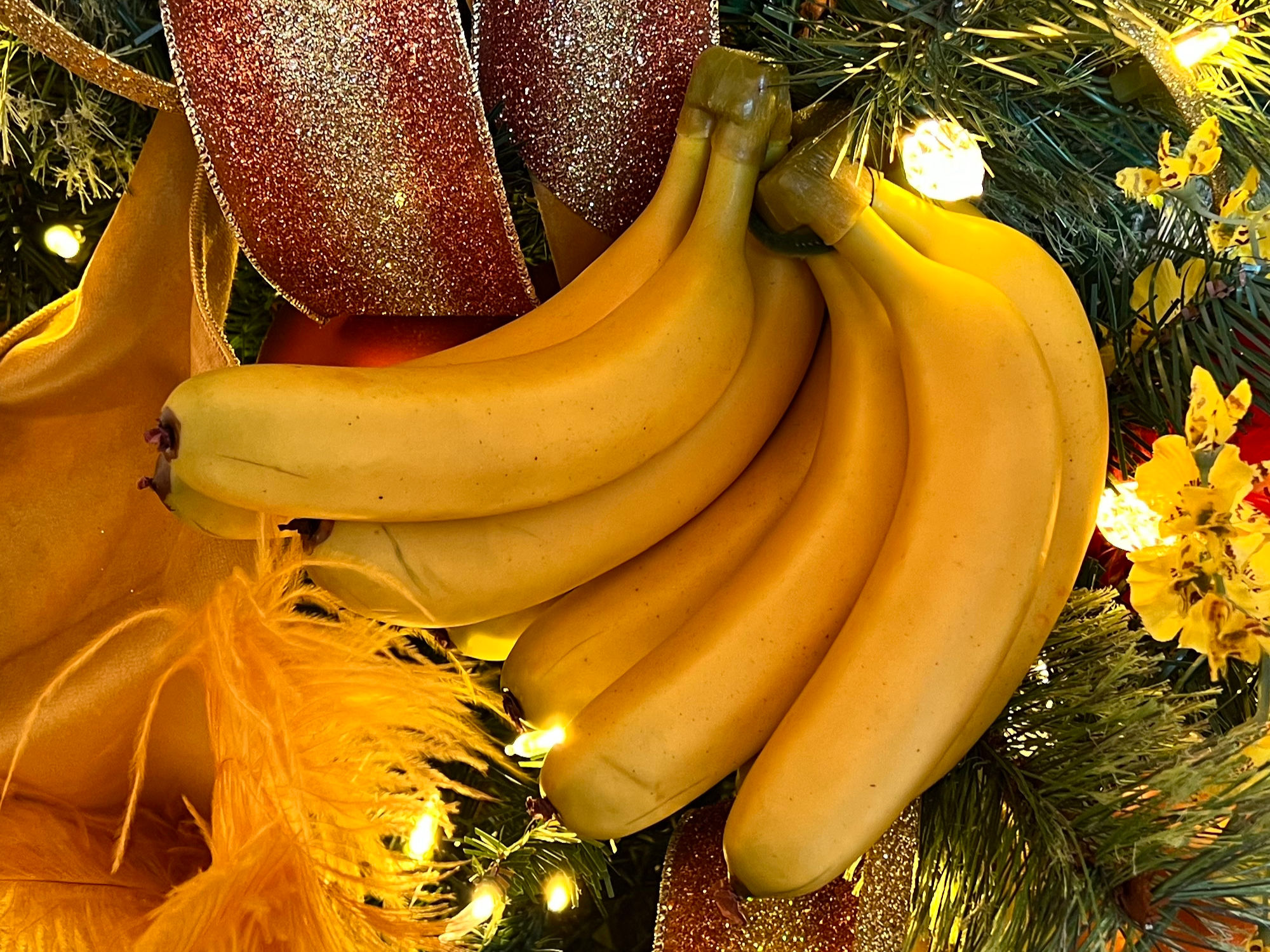
CHEF'S PENCILChristmas Foods in Costa Rica
Christmas is a wonderful time of year, full of anticipation with a certain something in the air. Some wait anxiously to decorate their homes with sparkly ornaments, go on holidays or plan family gatherings or reunions with friends.But one thing is sure: in Costa Rica, everybody is impatient to taste and enjoy traditional Christmas foods.
Here we share the most popular Christmas foods eaten in Costa Rica. This small but highly popular eco-destination has very tasty dishes that you won't want to miss if you happen to be there during the Holidays.
- Pork Tamales
As bold as it may sound, every Costa Rican agrees: "it isn't Christmas without tamales". We can confidently say that this dish is the most popular food at this time of the year. A 2014 survey found that Costa Ricans prepare 392 million tamales in December, 91.3% of the population eats tamales during the season, and 62% of households have a tradition of cooking them. The preparation of this dish is deeply rooted in traditional Costa Rican cuisine, passed down through the generations.- Christmas Cake
Loaded with either dried or candied fruit (sometimes both), nuts and rum, this delicious cake is the most popular Christmas dessert in Costa Rica.- Eggnog
Although eggnog originates from Britain, this delicious drink is never missed during Christmas celebrations in Costa Rica. Eggnog is often presented as a gift to holiday party hosts, usually presented in a beautiful bottle decorated with a bow.- Baked Pork Leg
The most popular meat consumed in Costa Rica during Christmas is pork. Even though several pork dishes might be prepared through the holidays, baked pork leg is hugely popular at Christmas and New Year's dinner. While is takes some time to prepare, the recipe is simple.- Christmas Apple Salad
Christmas apple salad is particularly sweet and creamy, popular with those with a sweet tooth. The star ingredient is the apple, hence its name, of course. It is quite simple to make as it is a combination of diced skinless apple, grated carrot, diced pineapple, chopped nuts, natural yogurt, raisins, and condensed milk. Kids love it!- Rice with Almonds
Rice is found in many traditional Costa Rican dishes, such as gallo pinto, rice with chicken, and simply served as one of the main side dishes for lunch and dinner. It is also found at Christmas festivities, but now a few extra ingredients are added to make it tastier and more sophisticated. This recipe is not 100% Costa Rican but, rather, a multicultural recipe with a few variations. It has become very popular with Costa Ricans over the last decade. This rice incorporates carrots, olives, garlic, bell pepper, onion, and of course sliced almonds.- Christmas Potato Salad
Another salad commonly found during the holidays is Christmas potato salad. As well as diced skinless potatoes, this dish contains boiled eggs, diced apples (marinated in lemon juice to keep their color), mayonnaise, and chopped green celery.- Arracache Hash
Arracache is a very popular tuber in Costa Rica that looks like a whitish carrot. It is harvested twice a year and it is mostly eaten in the form of a hash. The arracache is diced and combined with onion, cilantro, oregano, bay leaves, and ground beef. This savory combination is then typically served on top of corn tortillas. Arracache hash is not a main dish but a side or a starter.- Henchida or Enjarrada Hen
This is a traditional Costa Rican recipe that is very popular, mainly in the region of Guanacaste province. It consists of a creole hen stuffed with a delicious mix cooked in its own juices. Enjarrada is a Costa Rican term that means "the arms on jugs" (hands on the waist and elbows out) and henchida means becoming more robust, swelling or increasing in size. These two terms have fallen out of use over the years and remain common only in rural areas. The hen is harder to cook but is more succulent and the flavor more intense.


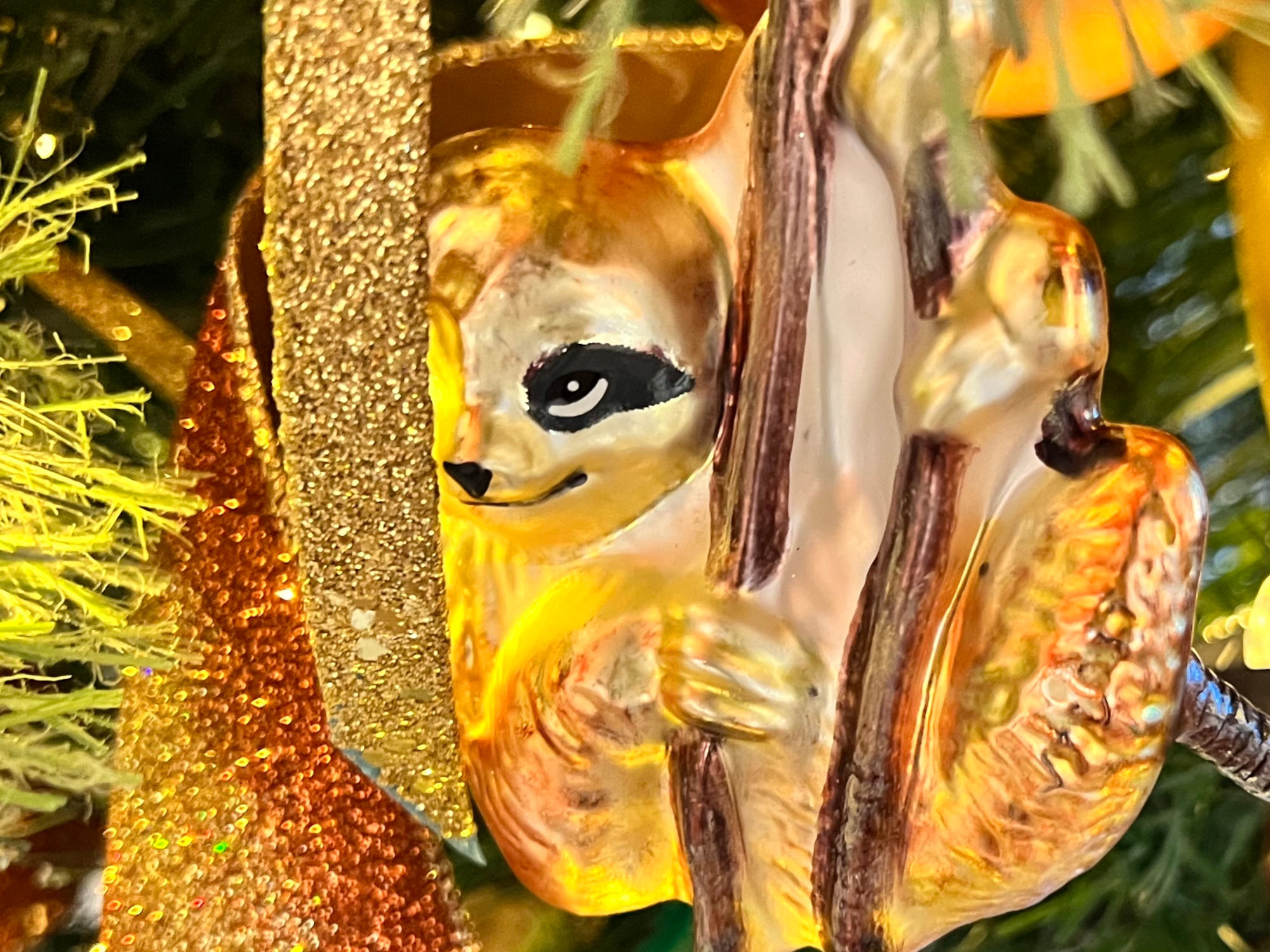

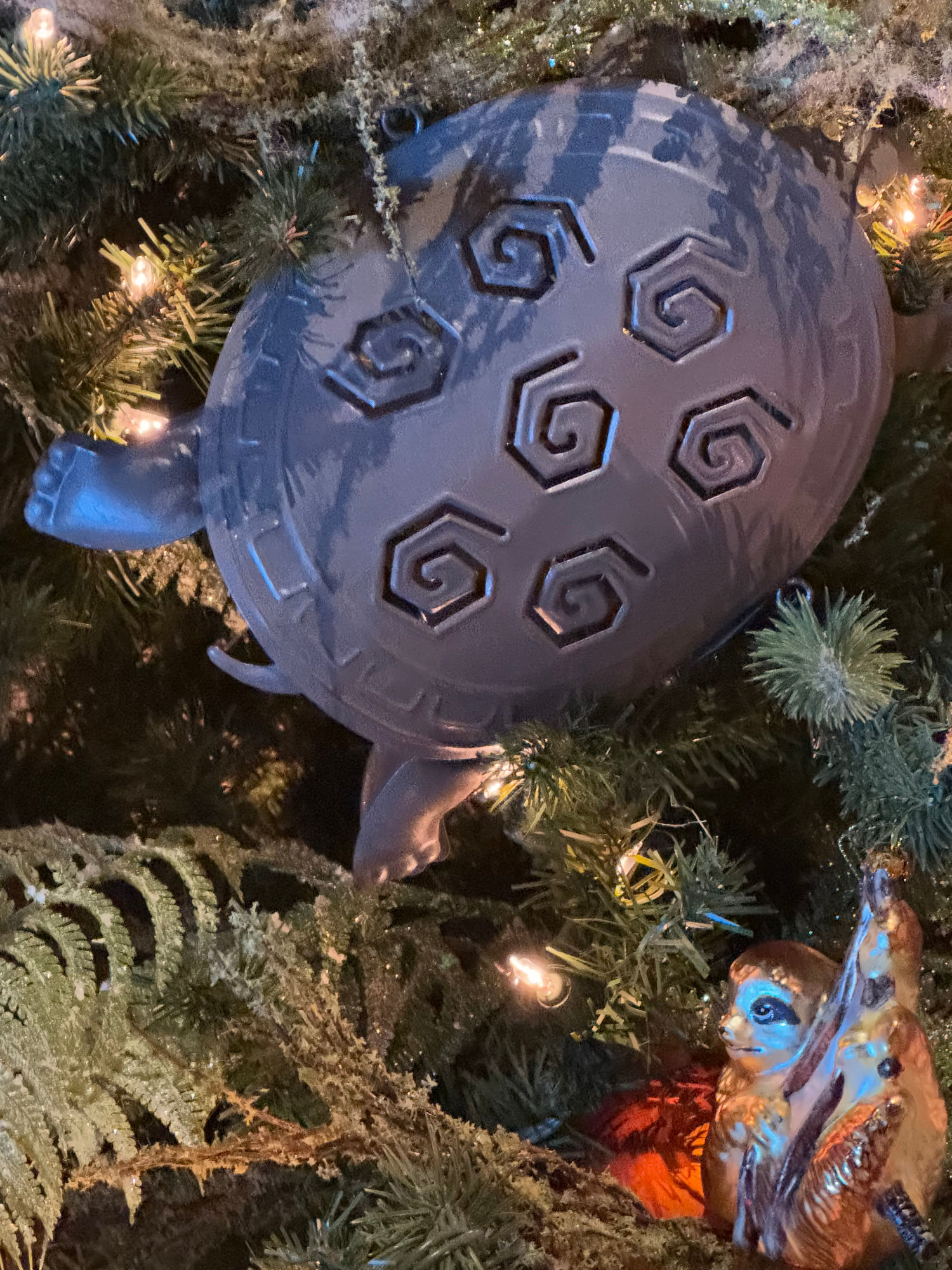

President Reagan and Luis Alberto Monge Alvarez during departure on Air Force One from Juan Santamaria International Airport during trip to Costa Rica.
Reagan's Daily DiaryFriday, December 3, 1982
Off to Bogota Colombia. Had an advance copy of toast he would deliver at lunch. It was a little harsh with a tone of resentment toward the "Colossus of the North." He has talked of recognizing Cuba & not being a satellite to U.S. etc. Met us at airport-again full honors & troop review. A large group of Americans were there and warm in their welcome. Helicoptered to Square to place a wreath at statue of Simon Bolivar. At Palace he & I (plus interpreters) met alone. He spoke of previous visits by Am. Presidents (J.F.K. last) and how nothing came of it. This gave me a chance to say I came to ask questions-what were our problems & how could we solve them. Told him of my dream for the W. hemisphere: That we had a common heritage of coming to this land from all over the world & that from pole to pole we worshipped the same God. He told me of his poor beginnings & I told him of mine. Then I pointed out-we were now the Presidents of our countries; That I wanted this kind of opportunity for everyone in all the Americas. By the time we did the farewell ceremonies at the airport I believe we were real friends.We flew on to San Jose Costa Rica. Same formal ceremonies. This was my 3rd meeting with Pres. Monge. I went on to Hotel Cariari where I had a meeting with Pres. Magana of El Salvadore. We spoke of need to emphasize their pursuit of human rights so we could continue to help.
Key Facts
- President Reagan leaves Brazil for Bogota, Colombia.
- President Reagan participates in a meeting with the President of Colombia to discuss what problems are currently plaguing the Americas and what steps can be taken to rectify them.
Ronald ReaganRemarks to the People of Costa RicaDecember 3, 1982
I'm happy to accept President Monge's invitation to see Costa Rica. I know your country has long been a model for peace, democracy, and economic progress in the Western Hemisphere.
Last month, President Monge spoke at the Conference of Free Elections in Washington about democracy. He made all of us who are committed to freedom very proud. "Democracy," he said, "has no universal formulas, like those of totalitarian philosophies. Its strength is that it allows free people to find their own solutions. As free people, we are not compelled to accept the one candidate offered to us by a small group claiming exclusive knowledge of the destiny of an entire nation. We, the voters -- free citizens -- make this decision."
Today the countries of Central America face enormous challenges: economic recession, social injustice, and the cynical efforts of outside powers to impose nondemocratic systems of government on them. But I'm confident we have the will and the ability to overcome these challenges.
The most promising formula for peace and security for the nations of Central America was proposed at the meeting of democratic nations in San Jose in early October. It offers terms for a peace that can be verified without fear of violation. It stresses the importance to peace of democratic institutions. I'm convinced, as I believe most of you are, that democracies find it easier to live in peace with each other.
In facing the economic challenges, the countries of this hemisphere have begun a cooperative effort to address the pressing needs of the Caribbean Basin. Part of the United States contribution to this effort -- $350 million in emergency economic assistance -- is already in place. I'm asking the Congress to give priority consideration to the other main features of our program -- open access to our markets for the products of the Caribbean and Central America, and incentives for American investment in the region.
I believe we all have a crucial stake in this venture. Democracy, and even our independence as free nations, are vulnerable to economic recession. By cooperating together, we can offer real hope for sustained growth to our peoples.
I have met with President Monge twice. From these meetings I know we share the conviction that it's through freedom and democracy that economic progress and social justice have their best chance to work. I look forward to visiting San Jose and to having the opportunity for further discussions with your President.
NOTEThe President's remarks were taped on November 22 at the White House for later broadcast on Costa Rican television.
WIKIPEDIAThe Republic of Costa Rica
A country in the Central American region of North America. Costa Rica is bordered by Nicaragua to the north, the Caribbean Sea to the northeast, Panama to the southeast, and the Pacific Ocean to the southwest, as well as maritime border with Ecuador to the south of Cocos Island. It has a population of around five million in a land area of 51,060 km2 (19,710 sq mi). An estimated 333,980 people live in the capital and largest city, San Jose, with around two million people in the surrounding metropolitan area.The sovereign state is a unitary presidential constitutional republic. It has a long-standing and stable democracy and a highly educated workforce. The country spends roughly 6.9% of its budget (2016) on education, compared to a global average of 4.4%. Its economy, once heavily dependent on agriculture, has diversified to include sectors such as finance, corporate services for foreign companies, pharmaceuticals, and ecotourism. Many foreign manufacturing and services companies operate in Costa Rica's Free Trade Zones (FTZ) where they benefit from investment and tax incentives.
Costa Rica was inhabited by indigenous peoples before coming under Spanish rule in the 16th century. It remained a peripheral colony of the empire until independence as part of the First Mexican Empire, followed by membership in the Federal Republic of Central America, from which it formally declared independence in 1847. Following the brief Costa Rican Civil War in 1948, it permanently abolished its army in 1949, becoming one of only a few sovereign nations without a standing army.
The country has consistently performed favorably in the Human Development Index (HDI), placing 58th in the world as of 2022, and fifth in Latin America. It has also been cited by the United Nations Development Program (UNDP) as having attained much higher human development than other countries at the same income levels, with a better record on human development and inequality than the median of the region. It also performs well in comparisons of democratic governance, press freedom, subjective happiness and sustainable well being. It has the 8th freest press according to the Press Freedom Index, it is the 35th most democratic country according to the Freedom in the World index and is the 23rd happiest country in the 2023 World Happiness Report.
- Stone tools, the oldest evidence of human occupation in Costa Rica, are associated with the arrival of various groups of hunter-gatherers about 10,000 to 7,000 years BCE in the Turrialba Valley.
- Agriculture became evident in the populations that lived in Costa Rica about 5,000 years ago.
- The earliest use of pottery appears around 2,000 to 3,000 BCE. Shards of pots, cylindrical vases, platters, gourds, and other forms of vases decorated with grooves, prints, and some modeled after animals have been found.
- Most of the native population was absorbed into the Spanish-speaking colonial society through inter-marriage.
- Like the rest of Central America, Costa Rica never fought for independence from Spain. On 15 September 1821, after the final Spanish defeat in the Mexican War of Independence (1810–1821), the authorities in Guatemala declared the independence of all of Central America. That date is still celebrated as Independence Day in Costa Rica even though, technically, under the Spanish Constitution of 1812 that had been readopted in 1820, Nicaragua and Costa Rica had become an autonomous province with its capital in Leon.
- In 1838, long after the Federal Republic of Central America ceased to function in practice, Costa Rica formally withdrew and proclaimed itself sovereign. The considerable distance and poor communication routes between Guatemala City and the Central Plateau, where most of the Costa Rican population lived then and still lives now, meant the local population had little allegiance to the federal government in Guatemala. Since colonial times, Costa Rica has been reluctant to become economically tied with the rest of Central America. Even today, despite most of its neighbors' efforts to increase regional integration, Costa Rica has remained more independent.
- Coffee was first planted in Costa Rica in 1808, and by the 1820s, it surpassed tobacco, sugar, and cacao as a primary export. Coffee production remained Costa Rica's principal source of wealth well into the 20th century, creating a wealthy class of growers, the so-called Coffee Barons. The revenue helped to modernize the country.
- Costa Rica borders the Caribbean Sea to the east, and the Pacific Ocean to the west. Costa Rica also borders Nicaragua to the north and Panama to the south.
- Costa Rica experiences a tropical climate year-round. There are two seasons. The dry season is December to April, and the rainy season is May to November.
- Many foreign companies (manufacturing and services) operate in Costa Rica's Free Trade Zones where they benefit from investment and tax incentives. Companies with facilities in the America Free Zone in Heredia, for example, include Intel, Dell, HP, Bayer, Bosch, DHL, IBM and Okay Industries.
- Of the GDP, 5.5% is generated by agriculture, 18.6% by industry and 75.9% by services. Pharmaceuticals, financial outsourcing, software development, and ecotourism have become the prime industries in Costa Rica's economy.
- The central location provides access to American markets and direct ocean access to Europe and Asia. The most important exports in 2015 (in order of dollar value) were medical instruments, bananas, tropical fruits, integrated circuits and orthopedic appliances.
- Costa Rica is the most-visited nation in the Central American region. Tourism generates more revenue and foreign exchange than bananas and coffee combined.
- Costa Rica is composed of seven provinces, which in turn are divided into 82 cantons (Spanish: canton, plural cantones), each of which is directed by a mayor. Mayors are chosen democratically every four years by each canton. There are no provincial legislatures. The cantons are further divided into 488 districts (distritos).
- Costa Rica is an active member of the United Nations
- On 1 December 1948, Costa Rica abolished its military force. In 1949, the abolition of the military was introduced in Article 12 of the Costa Rican Constitution. The budget previously dedicated to the military is now dedicated to providing health care services and education.
- The 2022 census counted a total population of 5,044,197 people. In 2011, there were over 104,000 Native American or indigenous inhabitants, representing 2.4% of the population.
- The 2011 census classified 83.6% of the population as white. The population includes European Costa Ricans (of European ancestry), primarily of Spanish descent, with significant numbers of Italian, German, English, Dutch, French, Irish, Portuguese, and Polish families, as well a sizable Jewish community. The majority of the Afro-Costa Ricans are Creole English-speaking descendants of 19th century black Jamaican immigrant workers.
- Most Costa Ricans identify with a Christian religion, with Catholicism being the one with the largest number of members and also the official state religion according to the 1949 Constitution, which at the same time guarantees freedom of religion. Costa Rica is the only modern state in the Americas which currently has Catholicism as its state religion
- The primary language spoken in Costa Rica is Spanish, which features characteristics distinct to the country, a form of Central American Spanish. Costa Rica is a linguistically diverse country and home to at least five living local indigenous languages spoken by the descendants of pre-Columbian peoples: Maleku, Cabecar, Bribri, Guaymí, and Buglere.
- The literacy rate in Costa Rica is approximately 97 percent and English is widely spoken primarily due to Costa Rica's tourism industry. When the army was abolished in 1949, it was said that the "army would be replaced with an army of teachers".
- Costa Rican cuisine is a blend of Native American, Spanish, African, and many other cuisine origins. Dishes such as the very traditional tamale and many others made of corn are the most representative of its indigenous inhabitants, and similar to other neighboring Mesoamerican countries. Spaniards brought many new ingredients to the country from other lands, especially spices and domestic animals. And later in the 19th century, the African flavor lent its presence with influence from other Caribbean mixed flavors. This is how Costa Rican cuisine today is very varied, with every new ethnic group who had recently become part of the country's population influencing the country's cuisine.
- Football is the most popular sport in Costa Rica. The national team has played in five FIFA World Cup tournaments and reached the quarter-finals for the first time in 2014.
EtymologyThe name la costa rica, meaning "rich coast" in the Spanish language, was in some accounts first applied by Christopher Columbus, who sailed to the eastern shores of Costa Rica during his final voyage in 1502, and reported vast quantities of gold jewelry worn by natives.


